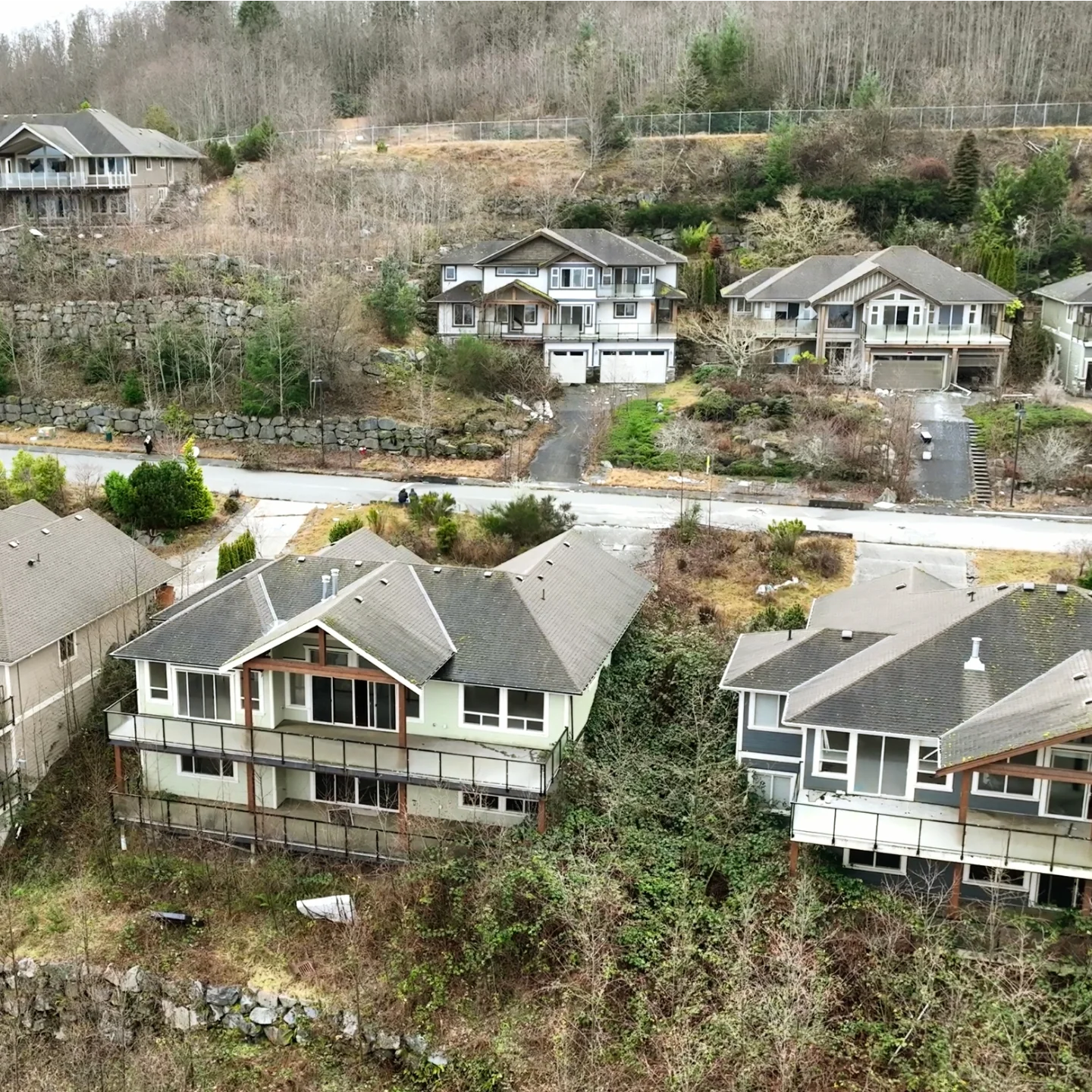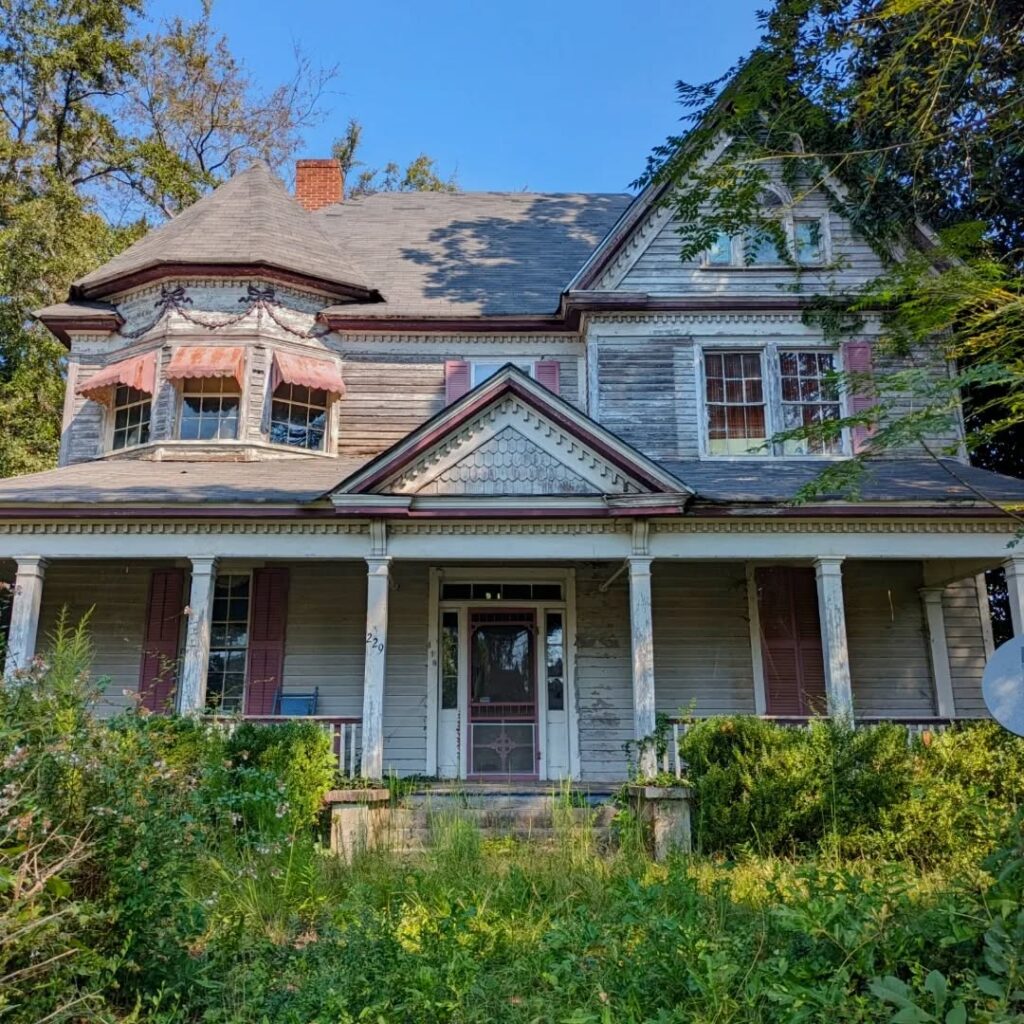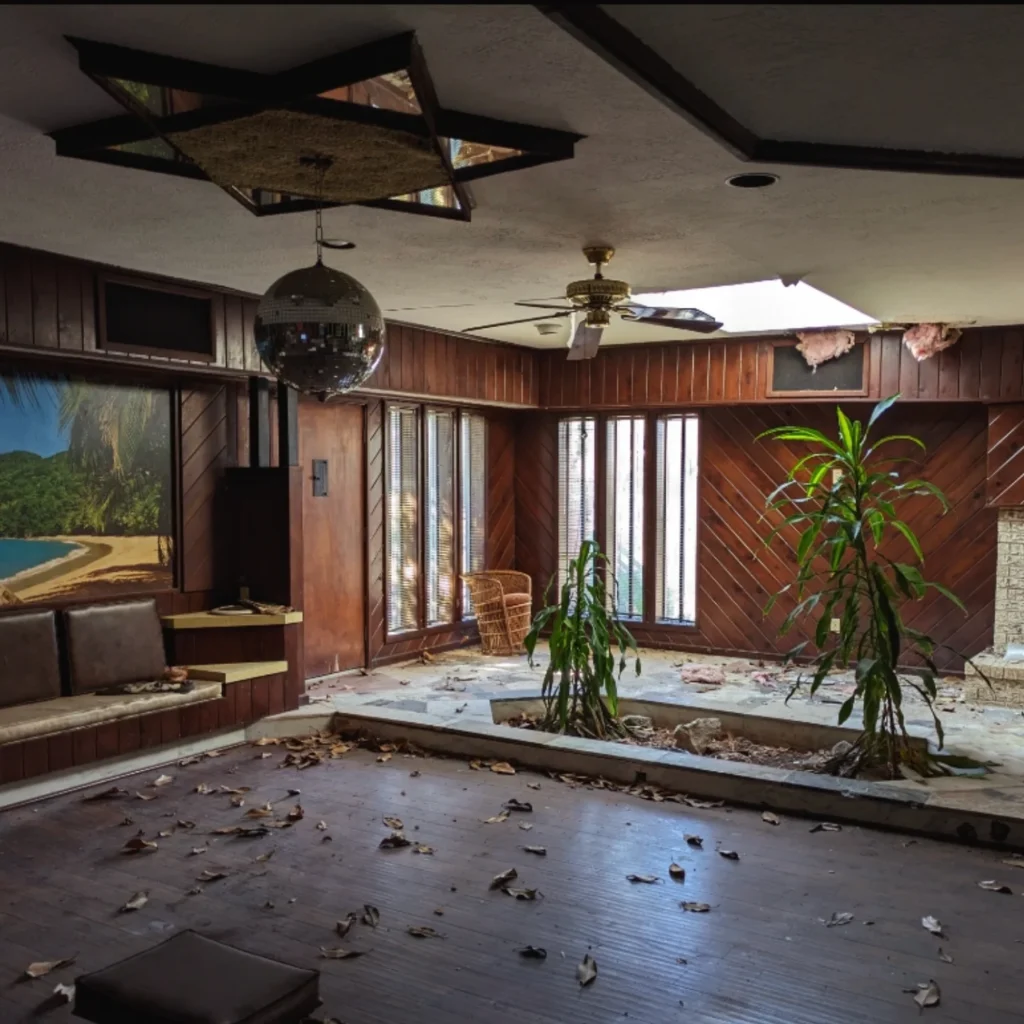There was a quiet coastal town in British Columbia called Sechelt. In it was a peaceful neighborhood that was previously inhabited by families and laughter and was full of community warmth. It is now a ghostly reminder of nature’s capricious power. This is a story about a neighborhood that was left behind not by choice, but by compulsion, as sinkholes began to consume the land on which it was constructed. Families were forced to leave and left behind homes and possessions and memories. In this blog post, we will explore the ghostly tale of this abandoned neighborhood, the horrors faced by those who lived there, and the eerie beauty of a place that is frozen in time.
Credit goes to Silent Hills Explorations
The Emergence of a Silent Society
Sechelt on British Columbia’s Sunshine Coast is renowned for its natural scenery—rich woods, peaceful beaches, and peaceful lifestyle. A community was constructed in Sechelt in the 1980s with affordable homes and stunning vistas of nature. Families flocked to the community in large numbers with the hope of a peaceful and idyllic lifestyle.
For decades, the community thrived. Neighbors would host barbecues, children played on the streets, and time moved slowly. The houses were modest, but they overflowed with laughter and love. It was a community in which everyone knew each other and there was a sense of community that was strong.
But there was trouble in store beneath.
The First Signs of Trouble
The problems first made themselves evident during the early part of the 2000s. Homeowners began to see small cracks in foundations and driveways. At first, they were blamed on minor settling that was normal in areas with poor soil. When the cracks grew larger and more prevalent, alarm spread.
Next came 2015 and what was unimaginable. A giant sinkhole materialized in the middle of the neighborhood and took up part of a road and part of a lawn. Ground that used to be solid was now crumbling without warning. Engineers and geologists were called to assess what was going on and what they discovered was shocking.
The buildings in the neighborhood were built on unstable ground that was a mixture of glacial deposits and soft soil. Over time, water seeped into the soil and eroded it and formed cavities below. Over time, the cavities collapsed and formed sinkholes that undermined the stability of the entire region.
The Evacuation: Tearing a Community Apart





Credit goes to silent_hills_explorations
The community was considered unsafe by the local authorities in 2016 and was put under immediate evacuation. Only weeks were given to families to pack what they would need and leave. It was not easy for them. They were not houses; they were homes with memories, milestone occasions, and a lifetime of belongings.
We spoke with several former residents for our video and listened to them share stories of struggles and perseverance. One homeowner, Sarah, shared with us about that day she received the evacuation notice. “It was like a nightmare,” she said. “We’d put a lot of energy into establishing our lives there and then it was going to be taken away.”
Another tenant, Mark, described the destruction of those final days. “We left behind a lot—furniture and photos and all. It was like your entire life was vanishing before your eyes.”
The evacuation was not just a logistical nightmare; it was also emotional. Families were forced to say goodbye to homes, neighbors, and communities they built. Many felt that trauma of losing homes was compounded by not knowing what was ahead Abandoned Neighborhood
The community remained stuck in time.
Today, Sechelt’s deserted neighborhood is a ghostly landscape. Vacant homes remain standing. Weeds cover lawns and cracked driveways tell a story of a community that was full and thriving. Inside houses, time has stood still. Furniture remains in place, dishes remain in the kitchen cabinets and family portraits remain on walls. It is as if residents merely left and took it all with them.
Walking through the neighborhood is similar to walking through a post-apocalyptic world. Streets that were once lined with children’s laughter and neighbors greeting each other are now eerily quiet. Only sporadic glimpses of wildlife, like a passing deer or a raccoon scurrying through a forgotten yard, disrupt the silence.
But amidst decline there is a strangely beautiful aspect. Nature is gradually reasserting control of the land, with wildflowers sprouting through cracks in pavement and vines crawling up walls. Abandoned though it is, the neighborhood is a testament to nature’s power and to human endeavor’s ephemeral nature.
The Human Cost: Stories of Loss and Resilience
During our video interview, we were lucky to interview several former residents of the sinkhole community who each shared with us his or her own personal experience of loss and resilience. Their accounts are a graphic representation of the human cost of the sinkhole tragedy.
The story of Sarah: A Lost Home
Sarah and her husband saved for decades to buy their Sechelt home. It was a dream home and was where they planned to grow old and start a family. When they were given the evacuation notice, they were devastated. “We’d put so much love into that house,” said Sarah. “It was like losing part of us to leave it behind.”
The story of Mark: A community shattered
Mark lived in the neighborhood for over 20 years. He considered it “family.” When sinkholes first began to emerge, he was optimistic that somehow it would be fixed. As it continued to get worse, he knew his beloved neighborhood was gone forever. “It was not houses that we lost,” he said. “It was that sense of place, that sense of community, that sense of friendship and memories.”
Emily’s Journey: Starting Fresh
Emily, with three children to support, struggled to get back on her feet after evacuation. She was short of funds and was required to move to a humble flat outside Sechelt. “It was beginning again from square one,” she said. “But I had to stay strong for my kids. We’re still on the mend, but we’re getting there.”
The Science Behind the Sinkholes
The Sechelt sinkholes are a vivid demonstration of nature’s strength and our requirement to be aware of the land that we build upon. Geologists report that the area’s distinctive geology—old glacial deposits and weak soil—rendered it highly susceptible to sinkholes. Slowly, erosion by water created cavities in the ground that eventually collapsed and swallowed land above.
While sinkholes are not uncommon, those that occurred in Sechelt were unprecedented in size and speed. The disaster has opened up significant debate about land use and urban planning and about demanding detailed geological studies prior to development.
The Future of the Neighbourhood
Today Sechelt is still a no-go zone, still deserted and with no future in sight. Some have proposed it be made into a park or nature preserve and nature be allowed to heal and restore it to its former glory. Others hope that with future technological and engineering advancements it will be possible to safely reconstruct. The old neighborhood will always hold a special place in the hearts of those who lived there. Even though they are no longer there, memories of those days still remain with them. As Sarah put it, “It wasn’t just a place. It was our home.”
Reflections on the Abandoned Neighbourhood
The story of Sechelt’s ghost town is a poignant reflection on human impermanence and human resilience. It is a story of tragedy, yet of hope—of people who came together in times of crisis and found it in themselves to begin anew. We walked through the empty streets and walked through the abandoned homes and were struck by the eerily beautiful nature of it all. It was a testament to how there is still beauty to behold even in destruction and loss. And though this neighborhood no longer exists, memories and stories of those who lived there will live on. So the next time you drive past somewhere that is abandoned, pull over for a moment and take a look. Think about what lives were lived there, what stories were told there, and what hopes were built there. And in that moment you will be struck by how beautiful and ephemeral is life and how powerful are stories.












